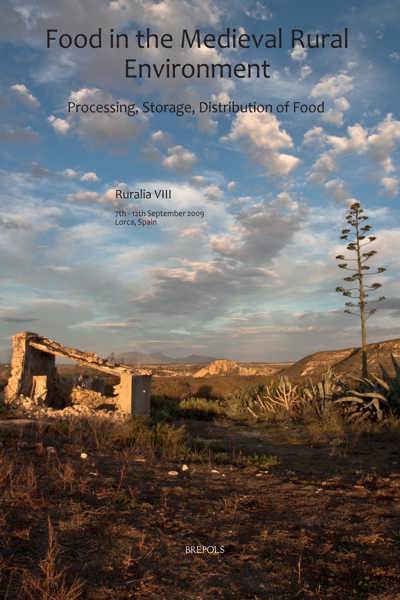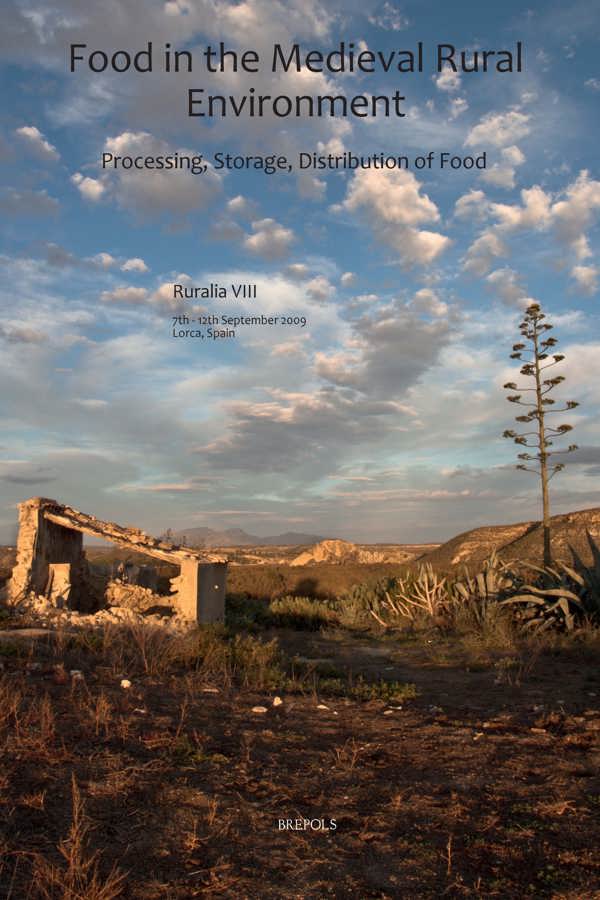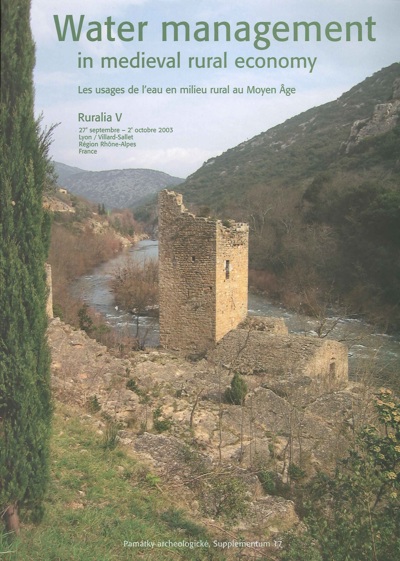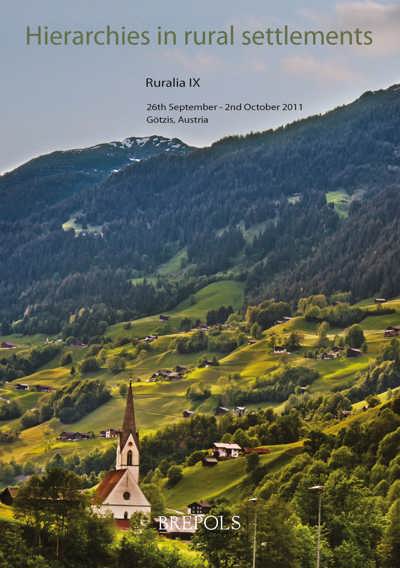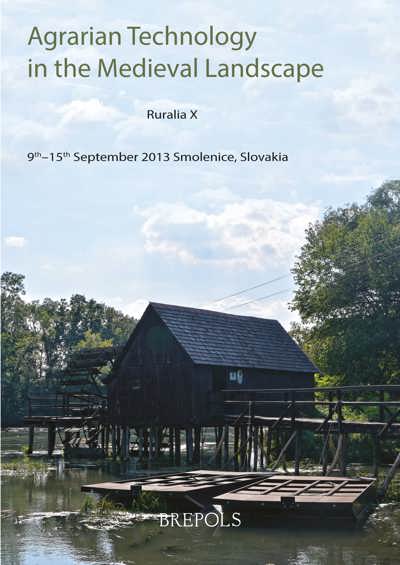
Food in the Medieval Rural Environment
Processing, Storage, Distribution of Food
Jan Klápšte, Petr Sommer (eds)
- Pages: viii + 433 p.
- Size:210 x 297 mm
- Language(s):English, French, German
- Publication Year:2011
- € 85,00 EXCL. VAT RETAIL PRICE
- ISBN: 978-2-503-53661-3
- Paperback
- Temporarily Out of Stock
- € 85,00 EXCL. VAT RETAIL PRICE
- ISBN: 978-2-503-53962-1
- E-book
- Available
"(...) the papers not only provide a valuable set of reference materials relating to food consumption across medieval Europe, but also provide an interesting cross-section of modern approaches to its study. They will hopefully provide the basis for new pan-European developments in the field." (Ben Jervis, in: Medieval Settlement Research, No. 27, 2012, p. 77)
In presenting the conference papers on the theme of food in the medieval countryside, Ruralia has managed to present a most useful platform in which mainstream archaeologists, historians and environmental specialists can exchange information and discuss similar issues from across Europe. The paradigms for understanding the dynamic of medieval society are seeing significant change. We increasingly understand the subtleties of the many and diverse influences that affected the production of food throughout the period. Regional variation emerges as a key observation, where different places are able to develop their own unique character, and how such exploitation can change over time. In addition to the more traditional model of subsistence economies, there is greater recognition of the market economy although views still differ on how early we can see the evidence for integrated markets. It is within this context that the distinctions between rural and urban become less clear. The interrelationships between both landscapes are being studied and will become a dominant theme over the next decade.
The 33 presentations that constitute he papers arising from the present conference reflect the different approaches being pursued across the discipline.
Jorge A. Eiroa Rodríguez, Fortified granaries in southeastern al-Andalus - José María Martín Civantos, The archaeology of irrigated spaces in southeast Spain during the medieval period - Guillermo García-Contreras Ruiz, Production and use of salt in al-Andalus: A state of the art and a perspective on its study - Helena Kirchner, Watermills in the Balearic Islands during the Muslim period - Philippe Mignot, Greniers collectifs berbères. Une relecture entreprise sous la conduite de Johnny De Meulemeester - Paolo de Vingo, Food preparation and preservation in north-west Italy: a comparative assessment in the study of early medieval eating and cooking utensils in the settlement of Sant’Antonino in western Liguria and the village of Trino Vercellese in the Po valley - Vianney Forest – Isabelle Rodet-Belarbi, Viandes animales dans le Languedoc-Roussillon rural médiéval : bilan 2010 - Sophie Gilotte – Sidonie Preiss, Le grenier médiéval d’Aschères-le-Marché : structures de stockage et indices carpologiques d’une petite unité agricole du centre de la France (Loiret) - Niall Brady, Food production in medieval Ireland, aspects of arable husbandry - Richard Jones, Elemental theory in everyday practice: food disposal in the later medieval English countryside - Piers Dixon, Of bannocks and ale: cereal processing in Scotland, c. 1100–1750 - Natascha Mehler, From self-sufficiency to external supply and famine: Foodstuffs, their preparation and storage in Iceland - Bert J. Groenewoudt, The visibility of storage - Jan van Doesburg, Archaeological evidence for pest control in medieval rural settlements in the Netherlands - Mette Svart Kristiansen, Fish for peasants and kings – a Danish perspective - Bi Skaarup, Gastronomic archaeology. How to unearth the culinary relations in our finds - Ingvild Øye, Food and technology – Cooking utensils and food processing in medieval Norway - Karin Viklund, Beer brewing in medieval Sweden – archaeobotanical and documentary evidence - Mika Sarkkinen, Fishing in the wilderness – Examples of peasant food management in northern Finland - Elisabeth Marti-Grädel and Richard Frosdick, Archaeozoological studies of the medieval food supply in north-western Switzerland - Benno Furrer, Nothing for mice to laugh. About traditional buildings and facilities for food storage - Thomas Meier, A farewell to the market! Constructing a Carolingian subsistence economy east of the Rhine - Rainer Schreg, Feeding the village – Reflections on the ecology and resilience of the medieval rural economy - Birte Heitzmann, Rural economies in urban situations: production, processing and storage of food - Susanne Arnold – Manfred Rösch, Verbreitung, Verteilung und Lagerung von Lebensmitteln unter dem Aspekt von ländlichem und städtischem Nahrungsangebot – eine naturwissenschaftliche und archäologische Betrachtung aus dem Südwesten Deutschlands - Stefan Blum, Granaries in the Black Forest - Sabine Felgenhauer-Schmiedt, Anbau, Ernährung und Aufbewahrung im bäuerlichen Milieu Niederösterreichs – verschiedene Quellen, verschiedene Aussagen - Mária Béres, Getreidespeichergruben des 10.–13. Jahrhunderts n. Chr. im Karpatenbecken - Edit Sárosi, Hungarian grey cattle on the European market between the 15th and 17th century - Csilla Zatykó, Aspects of fishing in medieval Hungary - Krzysztof Fokt –Jerzy Piekalski, Current problems of research on production, processing, storage and distribution of food in the medieval rural environment of Lower Silesia - Dagmar Winklerová, Zooarchaeological and archaeobotanical indicators for aspects of diet in medieval Kingdom of Bohemia - Terry Barry, Conclusions
